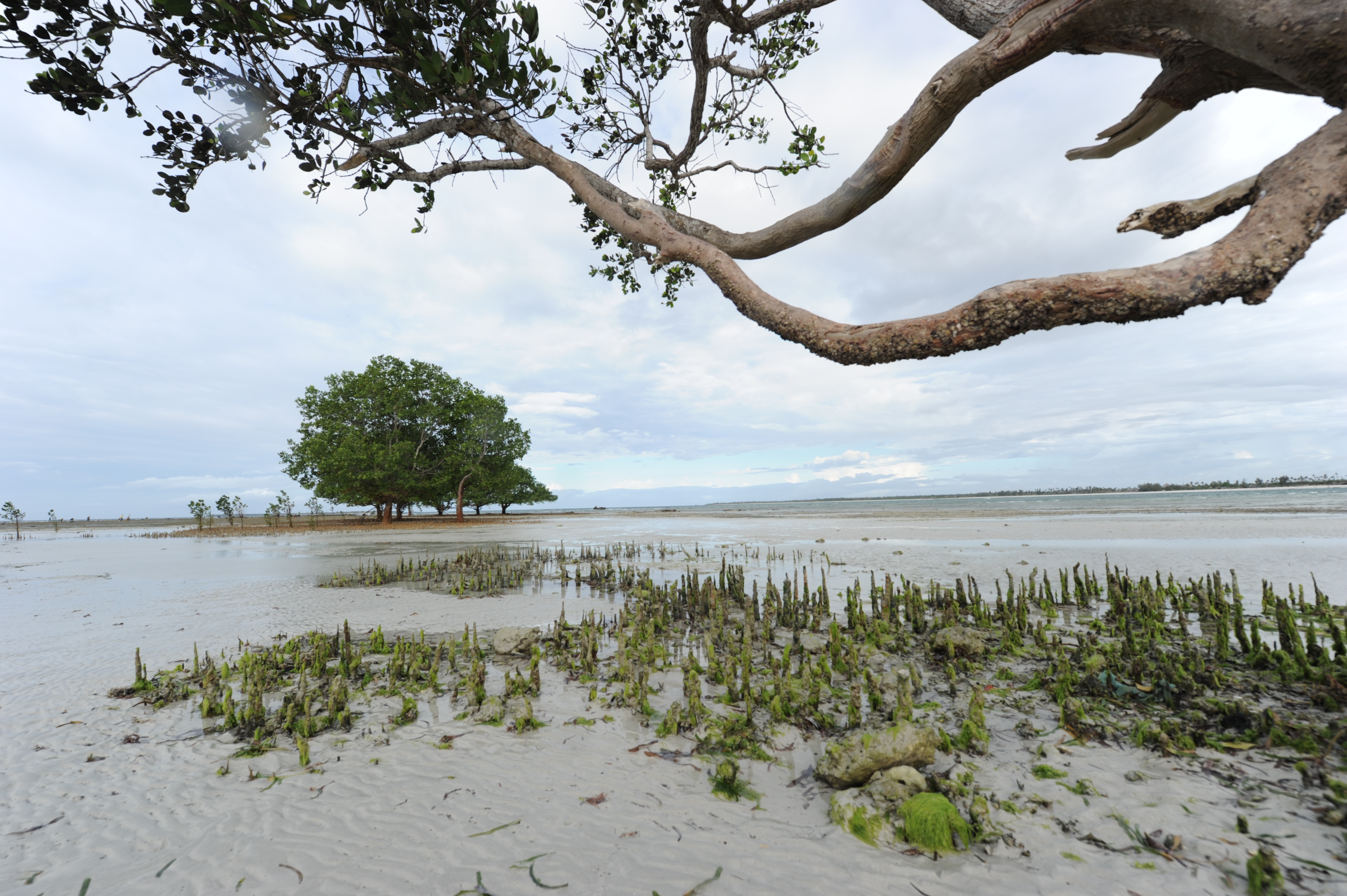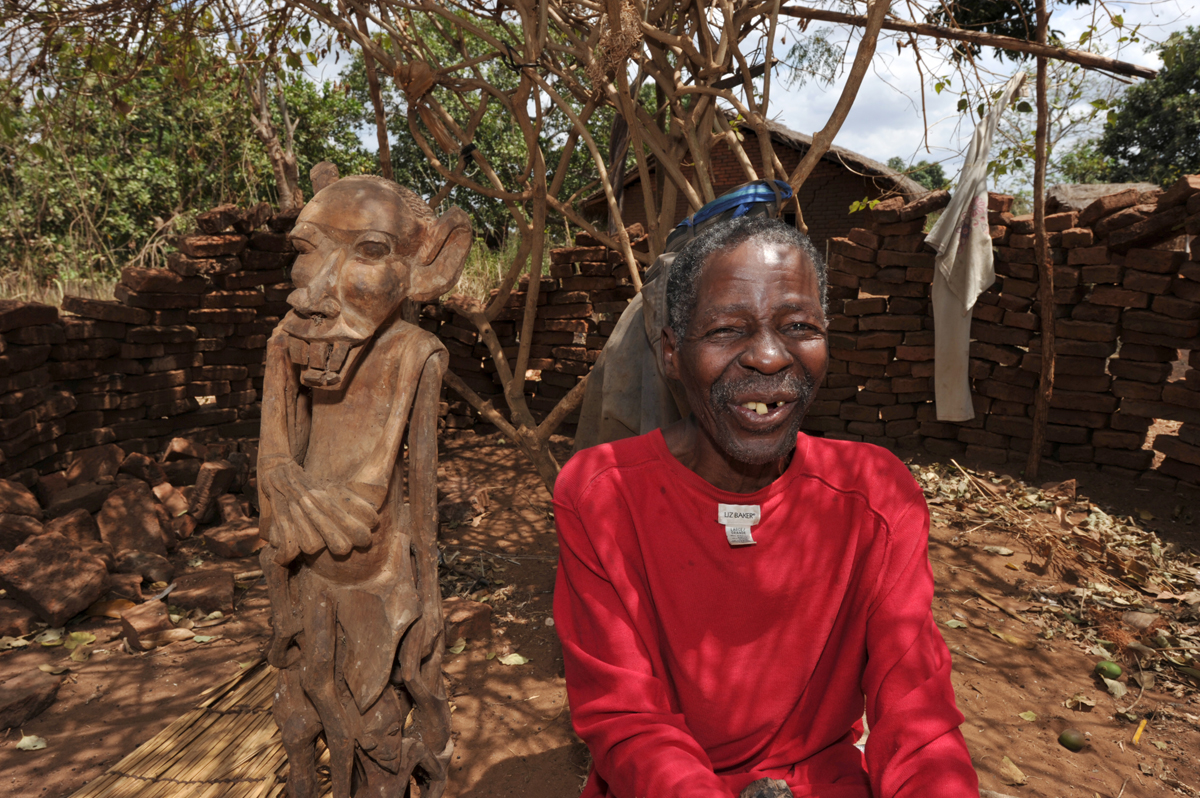

Ages ago, a living creature came to one place on the banks of the Ruvuma River (now called Mahuta). This creature walked upright but did not look like a human being. He did not bathe, did not cut his hair, and only ate and drank a little. He decided to stay in this place, but in the evening he felt lonely and bored. He then took a piece of bush wood and sculptured a creature from it. He then stood the lifeless creature on the ground and fell asleep. Overnight, this creature came to life, and it was a woman. They were happy together. They bathed and he became a full man while she became a full woman. They ate and drank and settled on the banks of the Ruvuma River.
Later on, the woman gave birth to a dead child. They left searching for another place, but another dead child was born. They then returned to the Ruvuma but had no luck. So they moved away from the river and settled on the waterless Makonde Plateau. At this place, the woman gave birth to many living children.
This is the legend of the Makonde people. They are an ancient group who were created from the wood and live their lives to bring their art to life because, according to legend, this was the way they were brought into this world.
The film opens with a small village full of dust while people are waking up and getting ready for a normal. Day. The sunrise is filtering through the cashew trees. The chickens are running between the straw huts. Women are walking around with water buckets on their heads. Children in school uniforms are ready to catch the public bus to school. Early morning merchants organize their stands with seasonal fruits and vegetables.
Tindo Lichanda, a slim black man with colorful beads around his neck walks 10 kilometers from his home. He has been awake since 4:30 a.m. in order to collect the wood needed for his statues. He is searching for the wood suitable for his carvings. The land is barren and it takes over 2 hours to find the correct wood. Every time he ventures off to find more wood, he needs to go farther and farther into the bushes.
Once he finds the wood, Tindo brings it back home to begin working. He starts to carve small pieces out of the wood as the children of the village flock around him. They laugh, play and fool around while watching his unique form of artwork come to life.
Tindo started carving in 1961 with his father. His father started working in Ndanda then moved to Nwanda. When his family finally settled in the Chikundi village, he established and began creating and selling his pieces. This is where we meet Tobias, his son. Tobias, a kind and sensitive carver, become a very important representative of the carvers in the area. After a while, he became the Manager of the recently opened Makonde Centre located in Chikundi. Here is where the festivities, festivals and music concerts take place. They are a good excuse to get together, have ritual dances, and listen to the local music playing.
Next we center on Miroslav Sirs at his gallery in the Czech Republic. The place is filled with different creations he has collected from various Makonde artists. He describes how he came to find the Makonde people and how the connection he has with them is unlike any other. When Miro arrives in the village, there is a festival to welcome him. Miro brings football jerseys for the boys and organizes games for them to play.
The next scene centers on a painter who is intricately detailing a canvas and lays it out in front of himself. His name is Rashidi Mzuguno and he describes to the audience what goes into each one of the paintings.
His father David was the first in the family to paint. Four out of 13 of David’s children followed in his footsteps to become painters. They learned from him, gaining perspective from his work. David used to let his children sign his paintings, their first acts as artists.
Rashidi lives in Kibamba village, not so far from Dar Es Salaam, the largest city in Tanzania. After his father’s death, the legacy still continued. Rashidi is a perfectionist who strives to be as good as his father was before him and hopes that his own children will one day learn from him.
This is the story of a life in the bush. The western world doesn’t think much happens there, but everything is connected. The trees and the water and the art form as one to bring three men together.




 Through their art, the people of Tanzania present us with their beliefs and show how different their way of life is from the western world. Tindo Lichanda is a sculptor from Nwanda who never dreamed that his sculptures would have such an impact on his culture. After settling in the Chikundi village, he built a life for himself and his family by selling his pieces. Rashidi Mzuguno is a painter and the son of David Mzuguno, a famous painter who knew that his son would continue his legacy even after his death. Both men, although their art differs in style, are able to show the history of their shared culture through their artwork.
Through their art, the people of Tanzania present us with their beliefs and show how different their way of life is from the western world. Tindo Lichanda is a sculptor from Nwanda who never dreamed that his sculptures would have such an impact on his culture. After settling in the Chikundi village, he built a life for himself and his family by selling his pieces. Rashidi Mzuguno is a painter and the son of David Mzuguno, a famous painter who knew that his son would continue his legacy even after his death. Both men, although their art differs in style, are able to show the history of their shared culture through their artwork.